Soffit vents are an integral component of a home’s ventilation system, located on the underside of the roof’s overhang, which is known as the soffit. While there are several different types of roof vents, these vents in particular allow for the intake of cooler air into the attic space, balancing the temperature and moisture levels. Their primary purpose is to provide consistent air flow to the attic, working in conjunction with other roof ventilation systems, such as ridge vents or gable vents, to ensure that hot air is not trapped within the attic. This is crucial for preventing a host of issues associated with poor attic ventilation, including heat buildup and moisture accumulation.
The proper installation and function of soffit vents are key to the longevity and efficiency of a home’s roof. Ventilation through the soffits operates on a natural flow system: as warm air rises and exits through higher vents, a vacuum is created that pulls fresh air through the soffit vents. This cycle of air exchange helps to maintain structural integrity and insulation effectiveness over time. It can also contribute to lower energy costs by reducing the strain on heating and cooling systems.
By ensuring that moist air does not condense within an attic, soffit vents play a critical role in preventing mold growth and wood rot. These issues can compromise the integrity of a home’s structure and negatively impact indoor air quality. Moreover, in certain climates, soffit vents can help in the prevention of ice dams by maintaining a roof temperature that discourages snow from melting and refreezing at the roof’s edge. Effective soffit ventilation is essential to preserving the overall health of a home and ensuring optimal thermal comfort for its occupants.
Importance of Air Circulation
Air circulation is critical to maintaining a healthy and energy-efficient home environment. Proper ventilation helps manage moisture levels and temperature, directly affecting both the longevity of a home’s structure and the comfort of its inhabitants.
Benefits of Improved Ventilation
Soffit vents play a significant role by facilitating consistent airflow through the attic and across the roof surface. How soffit vents improve air circulation is by allowing cooler air to enter the attic at the lowest point, which then pushes the warmer air out through the ridge or roof vents. This process, known as the stack effect, not only helps to maintain a temperate attic but also:
- Reduces the likelihood of mold and mildew growth by keeping the attic dry.
- Prevents ice dams in colder climates by minimizing the difference in temperature between the inside and outside roof surface.
Moisture Control and Energy Efficiency
Moisture control is crucial for protecting the structural integrity of a home. By preventing moisture build-up, soffit vents extend the life of roofing materials and the overall structure. Soffit vents also contribute to energy efficiency. Here’s how:
- They reduce the burden on HVAC systems as less heat accumulates in the attic, leading to lower utility costs.
- Energy consumption is minimized due to improved temperature regulation, contributing to long-term savings and environmental sustainability.
Effective air circulation facilitated by soffit vents is crucial for home maintenance and energy conservation. Soffit vents directly influence indoor comfort and play a part in lowering energy expenditures by enhancing the quality of air flow within the home’s structure.
Types and Advantages of Soffit Vents
Soffit vents play a critical role in home ventilation, affording a means for air to flow into the attic space, balancing temperature and moisture levels. Their design and application cater to various architectural styles and functional needs.
Comparing Soffit Vent Options
Continuous Soffit Vents:
- Description: They run along the span of the soffit, providing an even and consistent air flow.
- Advantages: Ideal for achieving uniform ventilation with minimal aesthetic disturbance to the building’s exterior.
Circular Soffit Vents:
- Description: Small, round vents that are spaced evenly along the soffit.
- Advantages: Easy to install post-construction and can be a good solution for homes requiring additional ventilation points.
Rectangular Soffit Vents:
- Description: Larger than circular vents, these can be spread out or closely paced depending on the soffit size and ventilation needs.
- Advantages: Can offer more air intake per vent, making them suitable for larger attic spaces.
Ducted Soffit Vents:
- Description: These are connected to ductwork, allowing targeted airflow to specific areas of the attic.
- Advantages: Highly effective for homes with complex attic spaces, as they direct air precisely where it is needed.
Each type of soffit vent brings forth benefits such as reduced potential for attic moisture problems, prolonged roof life, and improved energy efficiency by balancing attic and external temperatures. Proper soffit ventilation supports the function of other ventilation systems, like ridge vents, by facilitating air intake. This synergy helps maintain an optimal attic environment, ultimately protecting the integrity of the home.
Installation Guide
Proper installation of soffit vents is crucial for ensuring effective attic ventilation, which is why it is highly recommended that you go with a trusted team of high-quality roof contractors for the project. This guide outlines the essential steps for successful installation and points out common errors to avoid.
Installation Steps
- Preparation: They must begin by measuring the soffit area to determine the number and size of vents required. The attic square footage will dictate this number. The National Roofing Contractors Association (NRCA) recommends 1 square foot of vent area for every 150 square feet of attic space.
- Marking: Using a template that comes with the soffit vents, they mark the locations on the soffit where cuts will be made. It’s important that the marks are spaced evenly for uniform ventilation.
- Cutting Out Vents: A hole saw or jigsaw is ideal for making precise cuts in the soffit. They should ensure cuts are clean and match the dimensions of the vent.
- Installation: The vent is then positioned into the pre-cut opening and secured with screws or nails. Caution is advised to not over-tighten, as this could warp the vent frame.
- Sealing: Any gaps around the vent frame can be sealed with caulk to prevent moisture ingress.
- Final Check: Once installed, they should inspect each vent to confirm that it is securely fastened and there is no blockage preventing air flow.
Common Installation Mistakes
- Poor Placement: Incorrect spacing can result in inadequate ventilation. Each vent should be evenly distributed along the soffit to maximize airflow.
- Over Cutting: Making the holes too large can weaken the structure of the soffit and make it difficult to secure the vents properly.
- Under Sealing: Failure to seal the edges of the vent can allow for water entry, which can damage the roof structure over time.
- Obstruction: They must ensure that insulation or other materials inside the attic do not cover the vents, as this will impede their function.
- Inadequate Number: Not installing enough soffit vents can result in poor attic ventilation, leading to moisture and heat build-up.
By following these detailed steps and avoiding these common errors, one can ensure that the soffit vents are installed correctly to provide efficient attic ventilation.
Maintenance and Upkeep
Proper maintenance of soffit vents is crucial for ensuring their functionality and longevity. They play a vital role in home improvement by facilitating essential attic ventilation.
Regular Maintenance Tips
- Visual Inspections: Homeowners should periodically inspect soffit vents for blockages, such as leaves, nests, or debris. They need to be clear to function properly.
- Cleaning: Gently brush or vacuum the vents to remove dust and dirt. This preventive measure maintains airflow efficiency.
- Check for Damage: Look for any signs of damage like cracks or warping. Prompt repairs prevent bigger issues.
- Ensure Clear Pathways: Furniture or storage items in the attic should not obstruct the vents. Keep the area around them clear.
- Animal Intrusion: Install or inspect screens to prevent animals from entering and nesting.
- Repaint as Needed: If the soffit vents are part of the home’s aesthetic, repaint them carefully to prevent paint from clogging the vents.
Regular maintenance ensures that soffit vents contribute effectively to a home’s ventilation, reducing the risk of moisture damage and improving air quality.
Reach Out to Pinnacle Home Improvements
If you’re looking to enhance your home’s ventilation, Pinnacle Home Improvements is your go-to resource for all things related to soffit vents.
Proper attic ventilation is crucial for maintaining a comfortable climate within your home and extending the lifespan of your roofing materials. Soffit vents play a key role in this by allowing fresh air to enter the attic, balancing temperature, and reducing moisture buildup that can lead to mold and structural damage.
The experts at Pinnacle Home Improvements have a wealth of knowledge and experience in assessing ventilation issues and can guide you through the best options for your home. Don’t let poor attic ventilation compromise your home’s integrity and your family’s comfort. Reach out to Pinnacle Home Improvements today, and take the first step towards a healthier, more energy-efficient home.







